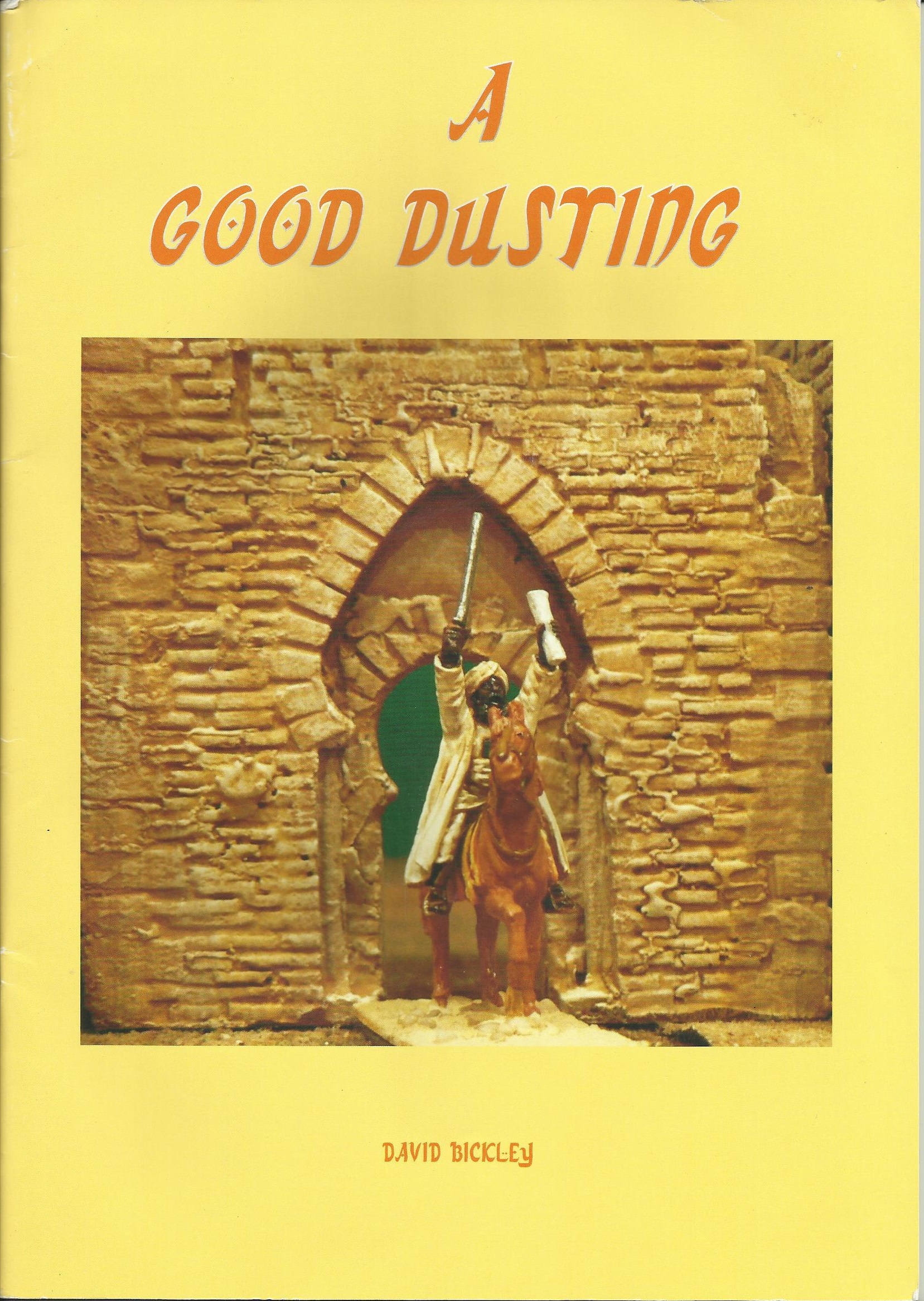|
|
|||||||||||||||||||||||
 |
|
The Rules Directory only works if you help. Write a review. Get the review template here. |
|
TITLE: A Good Dusting AUTHOR: David Bickley PUBLISHER: David Bickley PUBLICATION DATE: 2010 WEB SITE/SUPPORT FORUM: None listed. PRICE (with date): $20.00 (in 2016) REVIEWED BY: Mark “Extra Crispy” Severin PERIOD COVERED: The Sudan Wars of 1884-85 and the Egyptian Revolt of 1882 THE BOOK: A Good Dusting (AGD) is a thin booklet of 38 pages. It is printed on glossy paper and features color throughout. His collection is impressive but sadly the photos need work and do not do the “eye candy” justice. SCOPE: A Good Dusting covers the Sudan Wars at a tactical level. ARMY SIZE: Using the guidelines in the book, an Imperialist army would have roughly 6-9 infantry units of perhaps 20-30 figures each. Attached would be 2 or 3 cavalry units, 2 or 3 machine guns and perhaps a gun. the Mahdist army should be 2-3 times larger. BASE UNIT / GAME SCALES:
BASING SIZES: Flexible but the following sizes are suggested:
TURN SEQUENCE:
GAME MECHANICS: Mahdist Auto Generation: The rules include a “random” generation system for entry of Mahdist forces. This allows all players to play Imperial forces against a programmed Mahdist enemy. The rules give charts for determining the size, type and entry of Mahdist units. Once on the table they are governed by a Reaction Chart. Depending on the unit type a die roll governs thier actions. Movement: There are almost no movement rule per se. There is a chart which gives movement rates for each Nationality/Formation, specifying clear, rough, square etc. But it is left up to the players to deal with wheels, obliques, retrogrades, etc. Morale (Pluck) Rating: The rules provide a Pluck rating for each unit type and commanders. To pass a Pluck Test a player must roll equal to or lower than the rating on 2D6. Pluck must be tested for the usual reasons: losses, lost close combat, etc. A unit may use a commander’s rating instead if the commander is in range. A commander may lend his rating to only one unit per turn. Units that fail a Pluck test generally retreat. If a unit’s strength falls below it’s Pluck rating it is destroyed. Ranged Combat: All ranged combat whether spear, rifle or artillery uses the same system. Roll a D6 for every eligible firing figure. If you equal or exceed your To Hit number, you have scored a hit. You then roll to convert hits to kills. Cover affects the To Hit number. For each kill a casualty is scored against the target. Bases are removed once a certain number of hits have been scored. Infantry bases, regardless of the number of figures, are removed when they have taken 6 hits, for cavalry 2, for artillery 4 hits. Combat Close Up: Melee is called Combat Close Up and is resolved similarly to ranged combat except that in the first round only certain figures may fight (front rank plus overlaps, in some cases part of the second rank). From the second round on all figures fight. Units roll a D6 per figure looking to score hits, then roll to convert hits to kills. The side taking more losses is te loser and must take a Pluck test. If the loser retreats attackers may pursue (some MUST pursue). It appears the only way to have a second round of combat is if both sides inflict equal losses. The rules also cover a few interesting items important to the period including Riverboats and Dhows, Water, Baggage and Scouts and Spies. ARMY LISTS/SCENARIOS: The rule book includes one scenario - a simple Destroy the Village affair. It contains no army lists but has suggestions for army size as well as how to base/organize the various units and armies. REVIEWER’S COMMENTS: AGD appears to be a fast and easy set of rules. Players will need to approach them with a friendly eye as they contain many gray areas (as noted above). With a friendly group of fellows around the table there should be no problem, as they are clearly intended to be light, breezy and with a certain “Hollywood” flair. They are a bit of a mess with regard to layout, and the spelling errors get to be annoying even if they don’t alter the sense of any of the rules. A simple edit and some better layout and photos would iprove the book greatly, if not the games themselves. PLAYER’S COMMENTS: Not played. |
|
[Home] [15mm World] [Reviews Home] [How To] [Beginners Guide] [Gamer's World] [Spanner & The Yank] [Points of View] [The Annex] [Links] [Say Howdy] [Corporate Schill] [Rules Directory] |
 |
